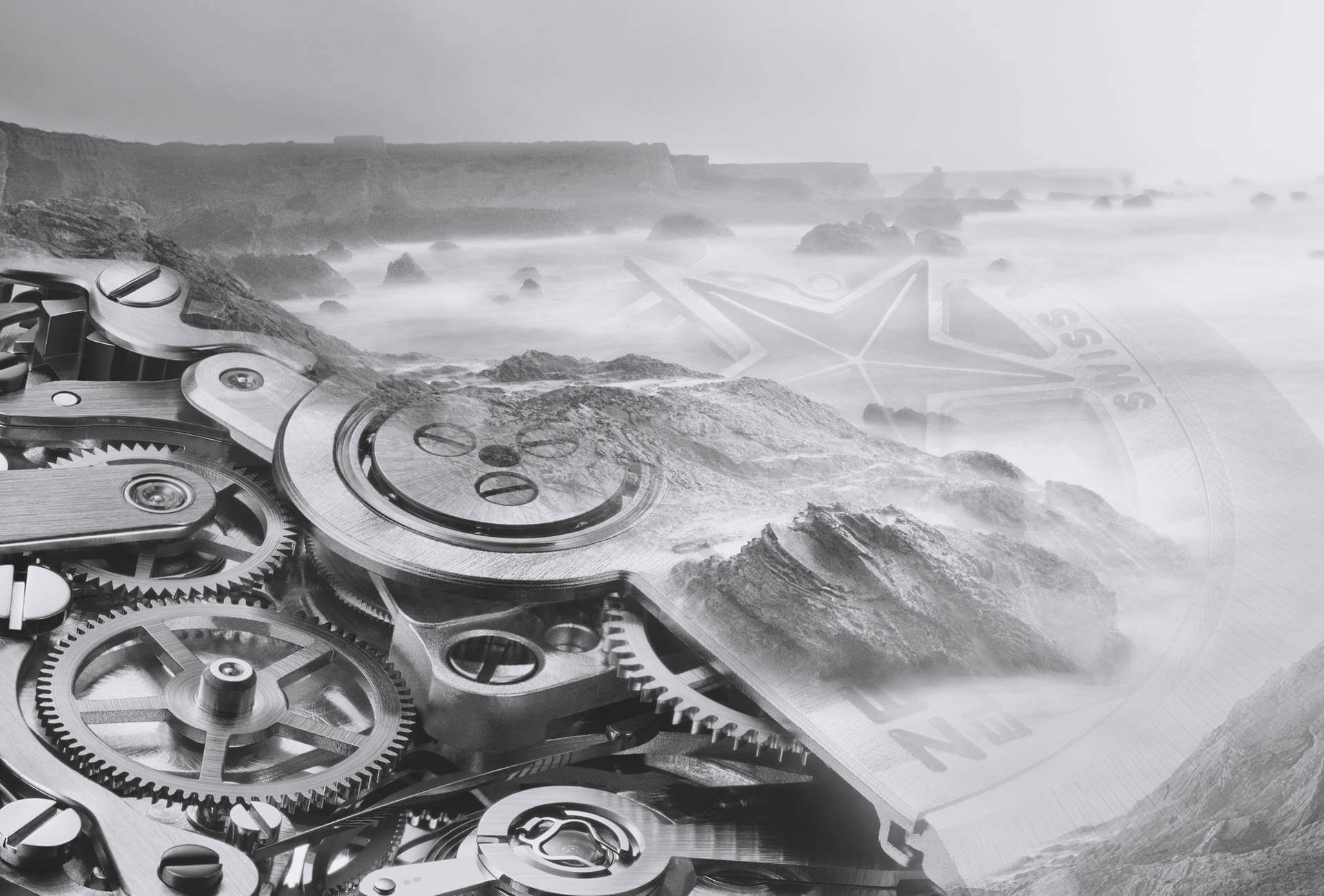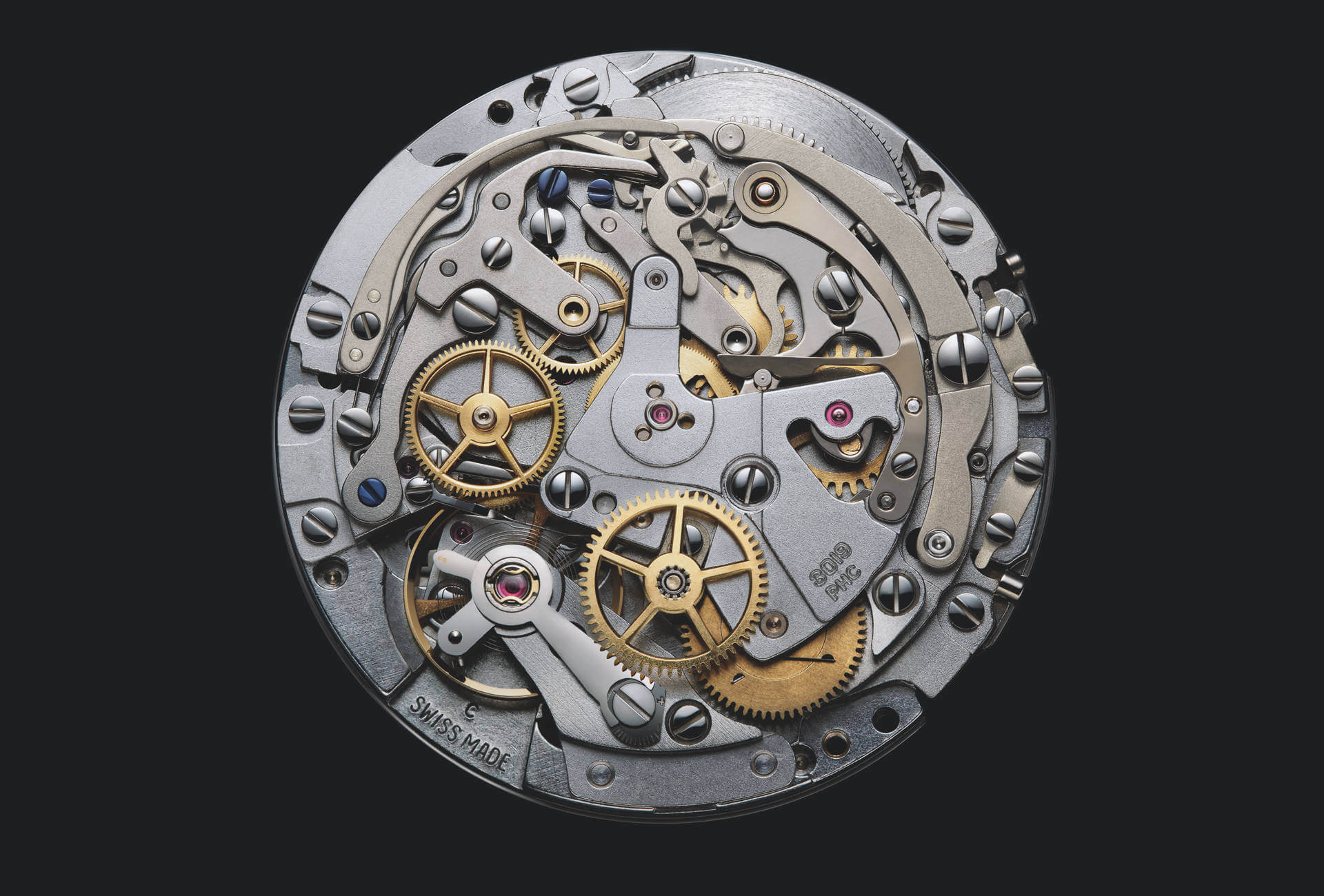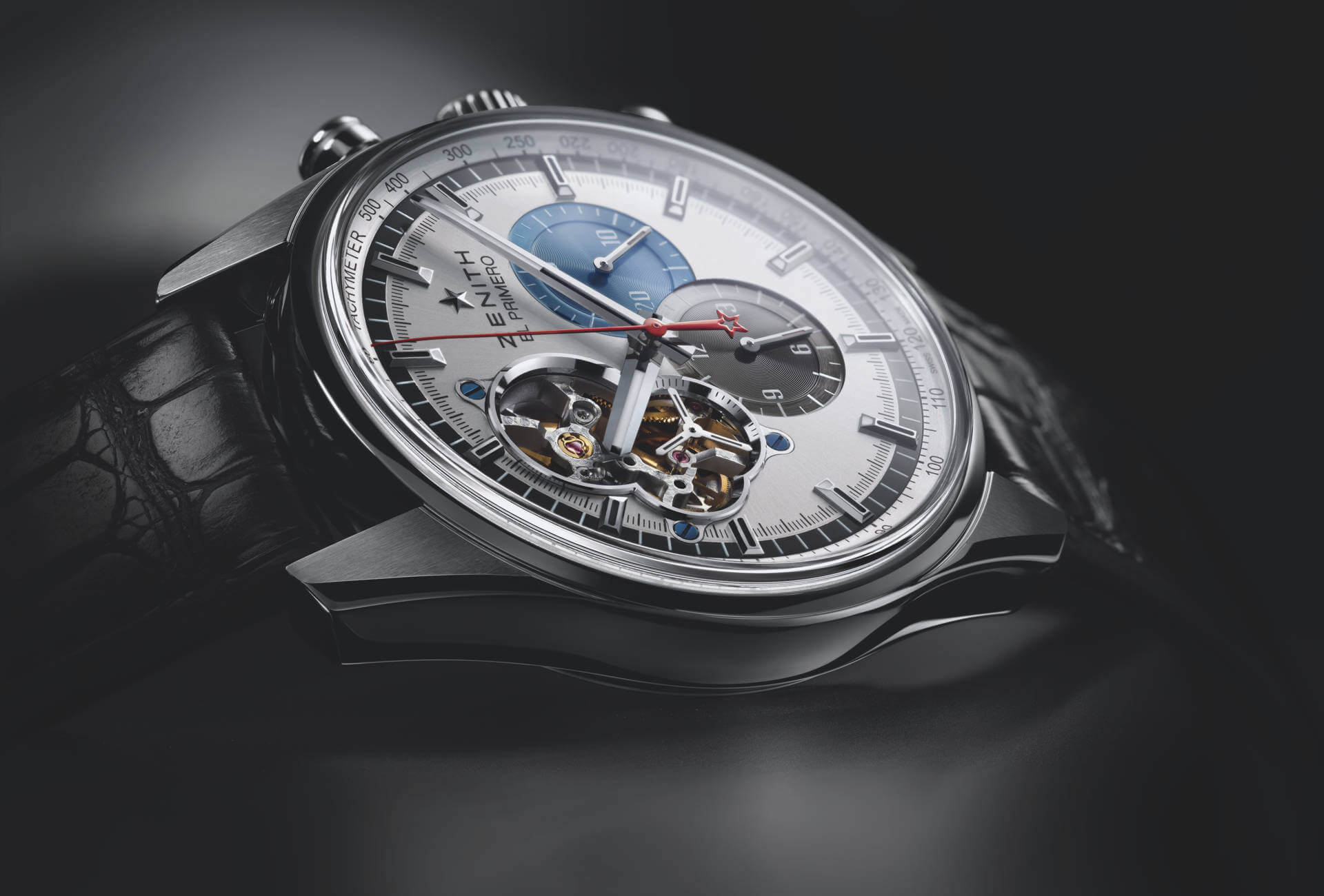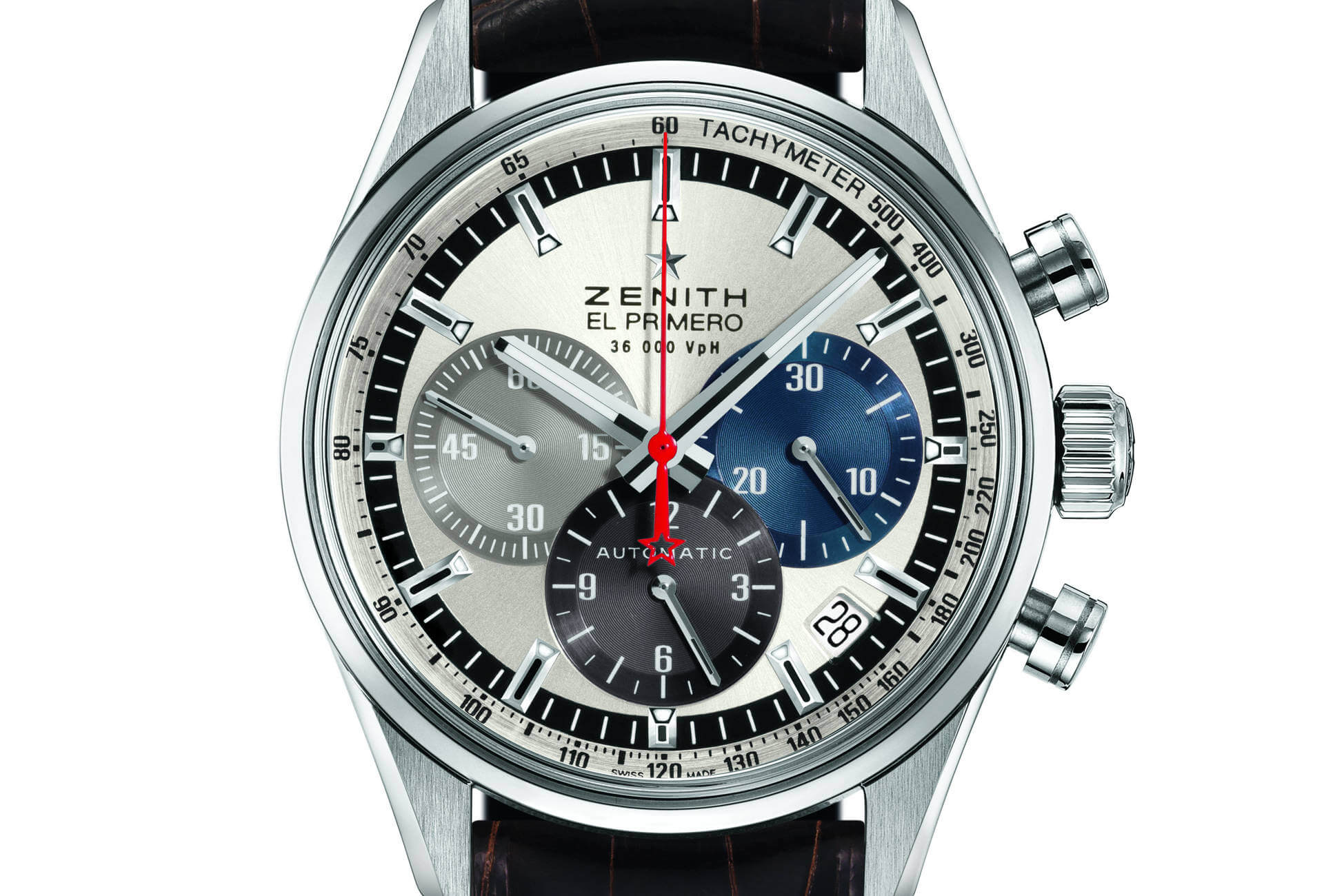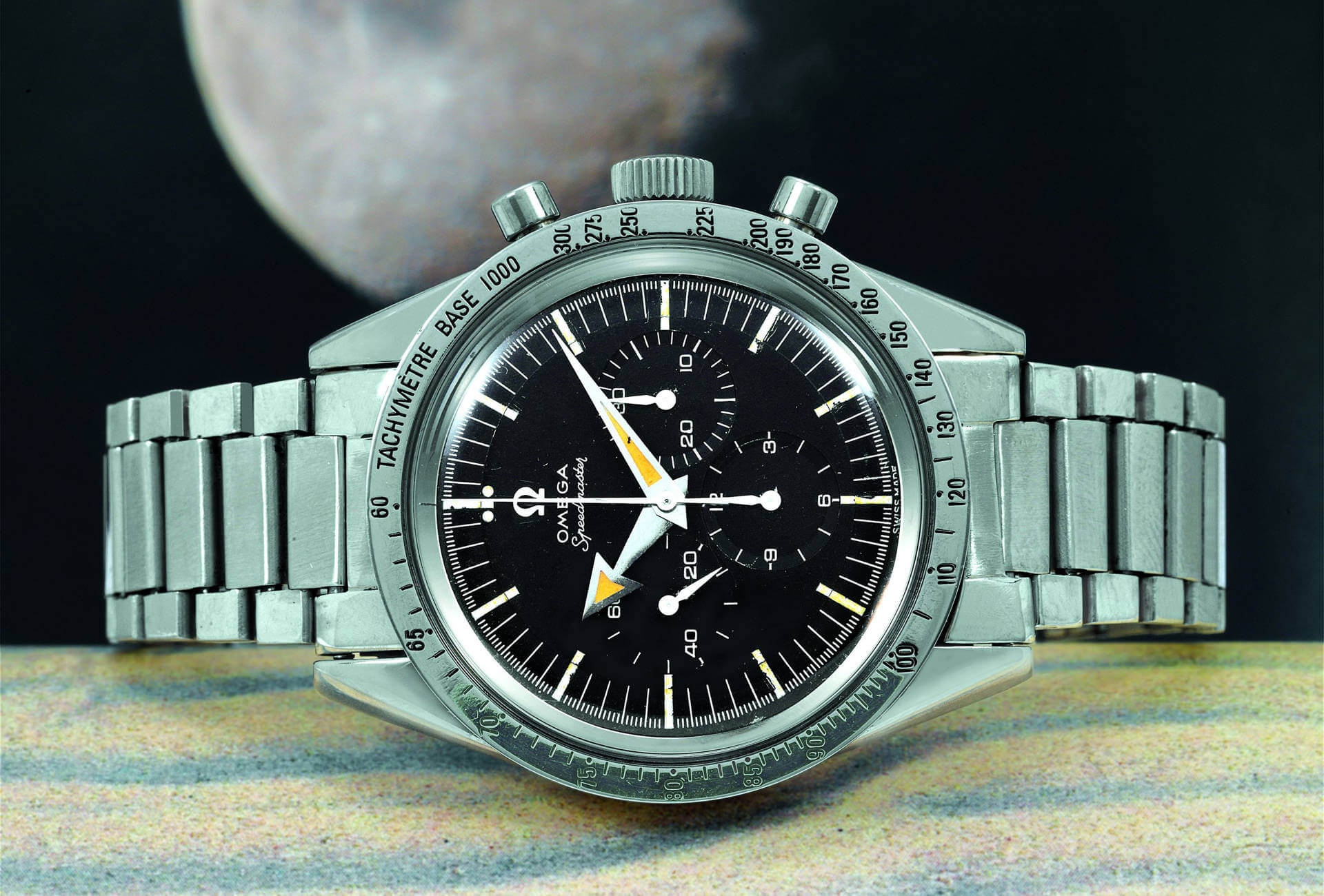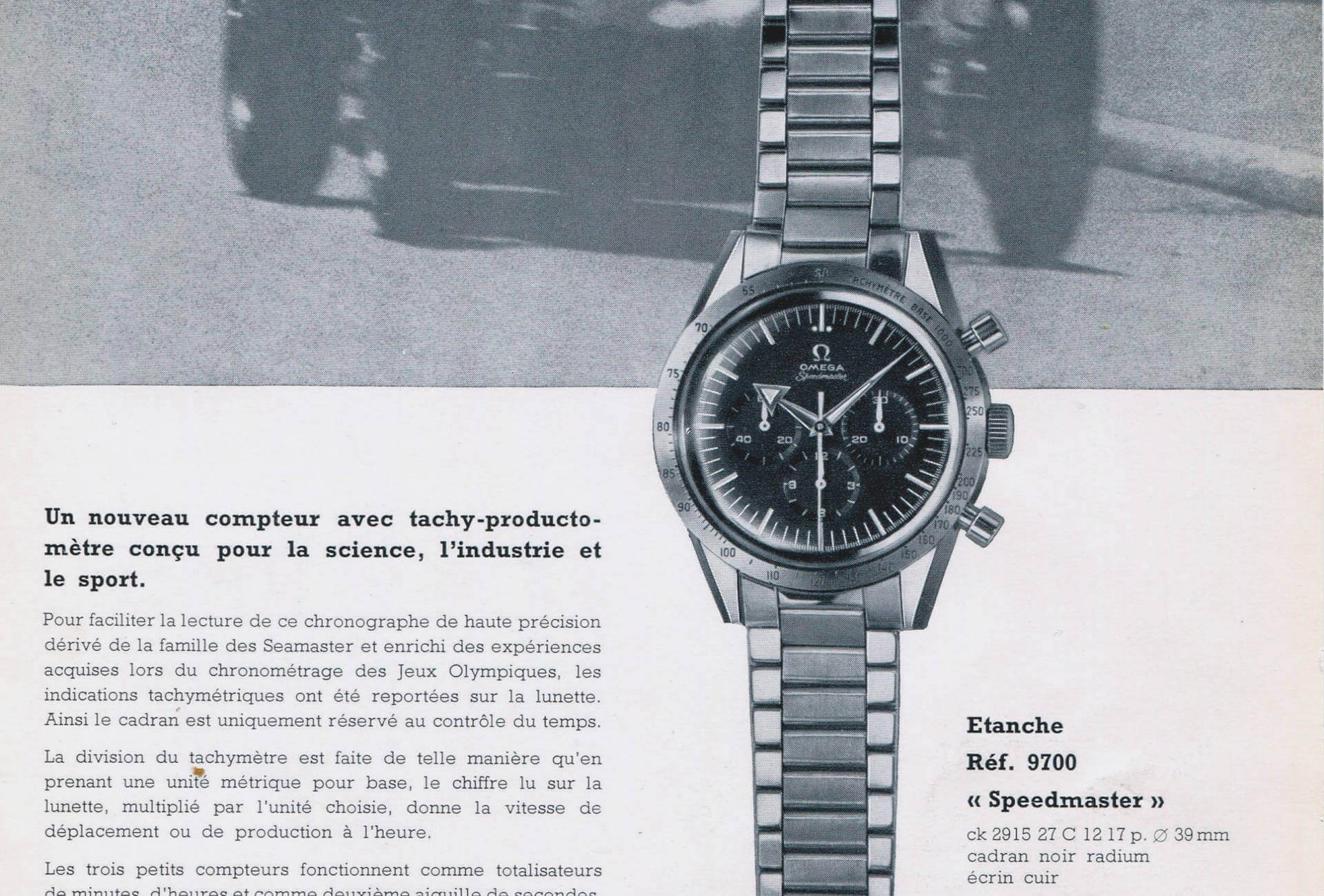In any conversation about the history of time measurement, the name of Sir John Floyer – an English physician and author who made his life’s goal the creation of a tool that would measure the human pulse – will likely ring fewer bells than a minute repeater. And yet it was he, with the help of one of the greatest masters of horology, Samuel Watson, also from England, who created the first ever stopwatch, or to spell it out, chrono-graph. The physician’s pulse watch, as it was named, had a seconds hand and a lever which, when pressed, stopped the entire movement to enable a doctor to accurately measure the patient’s pulse rate. Both the seconds hand and the lever which stopped the movement were horological innovations. Introduced in 1690, the physician’s pulse watch was and still is the point zero of all portable timepieces that count seconds so that they can be accurately recorded.
Integrating the stopwatch complication into existing calibres was extremely tricky, and so it wasn't until 1913 that Longines produced the first wrist chronograph.
A proliferation of stopwatches and chronographs followed. Louis Moinet began working on his Compteur de Tierces (literally “counter of thirds”, a term used to denote one sixtieth of a second in a pre-decimal age) in 1815 and completed it around a year later in 1816. The next step came from Nicolas Mathieu Rieussec of France in 1821. He created a chronograph for King Louis XVIII, although less complicated than the Compteur de Tierces. By the 1870s, mechanical stopwatches were in general use on racetracks, at sporting events, and especially among artillery officers. Integrating the stopwatch complication into existing calibres was extremely tricky, and so it wasn’t until 1913 that Longines produced the first wrist chronograph. Breitling perfected the design in 1923 by separating the stop/start function from the reset function, through a combination of a crown and a single pusher at 2 o’clock. In 1932 Universal Genève added a second pusher at 4 o’clock for resetting. This would be the face of the chronograph.
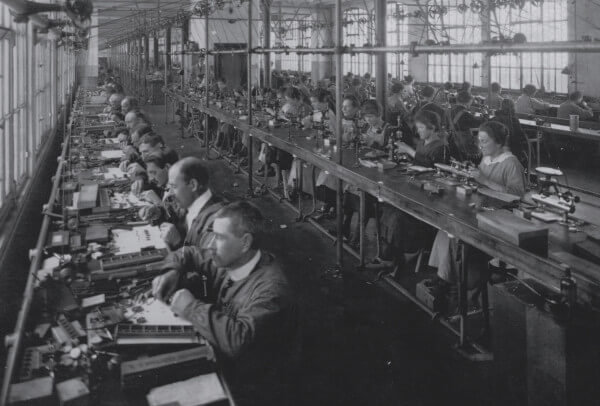
Three competitors in the race
Several names stand out from this first period, with productions that closely resemble what we know today. Companies like Venus, Leonidas, Minerva, Martel, Excelsior-Park, Valjoux and Lemania produced outstanding chronograph calibres. Legendary wrist chronographs were born, such as the Universal Genève Aero-Compax, the Navitimer and the Chronomat by Breitling, the Rolex 4113 split-seconds chronograph, Minerva chronographs with the 13-20CH calibre, Longines chronographs with the 13ZN calibre, and aviation chronographs from Hanhart, Urofa and, later, Breguet and others. The apogee of this era was undoubtedly the most legendary and celebrated hand-wound chronograph of them all: the Omega Speedmaster, which this year celebrates its 60th anniversary.
Even so, the Swiss industry experienced a massive decline in sales of chronograph watches in the late 1950s due to the ever increasing popularity of the automatic and waterproof watches now on offer. By 1960, the hand-wound chronograph seemed like something from another era. The solution was for the chronograph to modernize itself with automatic winding. Lemania had already produced a prototype automatic chronograph calibre in 1947, but it never left the factory; Omega directors are said to have deemed the project superfluous. Omega having lost its big chance, the race to produce the world’s first automatic chronograph fell to three competitors.
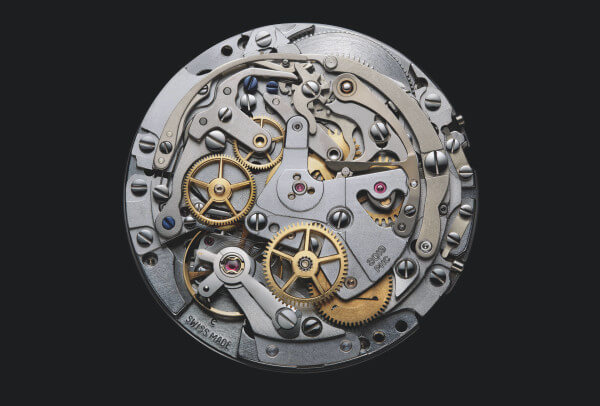
In 1969, Zenith, Seiko and a consortium of Dubois-Depraz, Buren, Breitling and Heuer each developed its version. Which of them finished ahead of its rivals is a source of controversy even today. Whereas Zenith announced its achievement first, in January 1969, the Heuer Caliber 11 seems to have made it to the global market ahead of the others, in August 1969. Meanwhile, Seiko was quietly working away in the background and released its automatic chronograph on the Japanese market as early as May 1969. The story of this race and the arguments about who was actually first can be found in various blogs and forums, with the fullest account coming from a three-part series by Jeff Stein at his onthedash website.
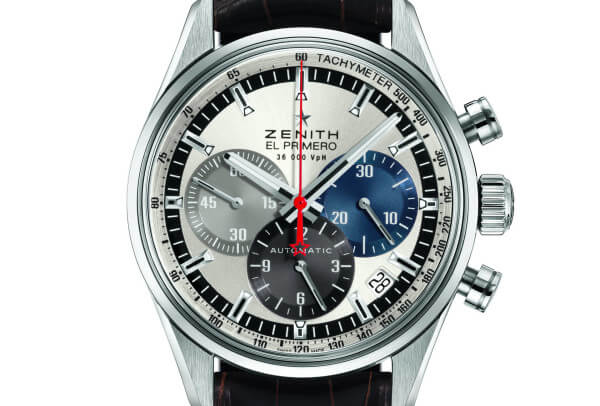
"Getting it right first time"
Seiko’s 6139 calibre was the first full rotor, vertical clutch, column-wheel controlled, automatic chronograph ever, with 17 jewels, a 30-minute counter and quick-set day-date complications, beating at 21,600 vph. The second was Caliber 11, developed under the watchful eye of Jack Heuer. He brought into the mix Buren, which made some of the world’s most compact automatic watches, and Dubois-Depraz, a specialist in converting basic movements into chronographs. The company had already been experimenting with Buren’s microrotor automatic movements to develop a modular chronograph. Breitling and Hamilton completed the line-up. The Calibre 11 Chronomatic built on Buren’s ultra-thin Intramatic microrotor movement with a Dubois-Depraz chronograph module on top. It had a left-side crown and right-side chronograph pushers. Another notable feature of Chronomatic movements was the bi-compax layout, with chronograph hours on the left, chronograph minutes on the right, and a date window at 6 o’clock.
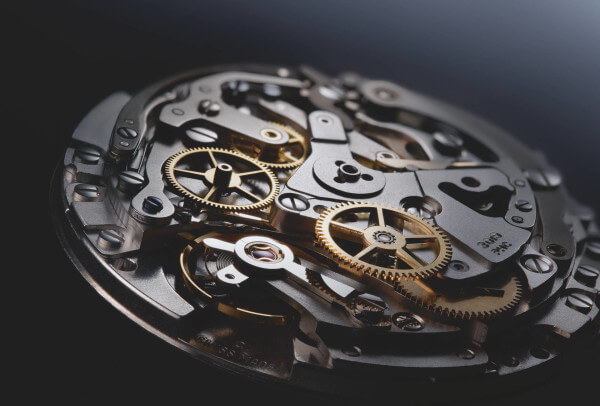
This leaves the Zenith El Primero, surely the most technically complete automatic chronograph of the day. Zenith was a small company that did not possess its competitors’ resources. What it did have was a clear vision and the technical expertise of Martel. In 1960 Zenith had bought one of the most important manufacturers of excellent calibres that equipped watches from various well-respected brands. The foundations for the development of the El Primero were already in place. Calibre 3019PHC was a full rotor, automatic, 12-hour, integrated, column-wheel chronograph that beat at a frequency of 36,000 vph. This allowed it to measure short times to one tenth of a second. It had a date display at 4 o’clock with instantaneous change, a 50-hour power reserve and a diameter of 30mm for just 6.5mm in height, making it a very compact calibre. Calibre 3019PHC was and perhaps still is the best example of “getting it right first time” in watchmaking: a superb movement way ahead of its time.
Perhaps the most important automatic chronograph ever created, the El Primero stood head and shoulders above the rest.
Primus inter pares
There is a before El Primero and an after, namely a brief but very real “chronograph war”. The competition intensified when the Heuer group quickly replaced Caliber 11 with Caliber 12 due to some teething problems. Lemania produced the wonderful 1340 and later the utilitarian 5100. Omega produced the awesome 1040 with a Lemania base and, shortly after, the chronometer-grade 1041. Valjoux riposted with the classic 7750. All these were fantastic automatic calibres that equipped fantastic watches. This was, however, an extremely difficult period for a Swiss watch industry in crisis. Many companies were put out of business and those that did manage to survive were forced to scrap projects and even vital production tools and machines. During this time, only a very small number of automatic calibres were produced in the country, which is somewhat ironic considering there were so many of them around.
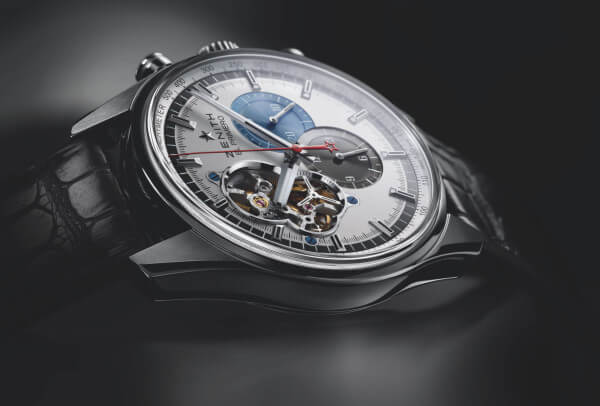
Perhaps the most important automatic chronograph ever created, the El Primero stood head and shoulders above the rest. It broke new ground as a high-beat (for increased accuracy), 12-hour, fully integrated chrono. It was almost 17 years before the industry came up with something equivalent (Frederic Piguet Cal. 1185). In addition to its technical qualities, the El Primero was a compact calibre which is why Rolex chose it to equip its Daytona, as it meant no alterations were needed to the Oyster case. Zenith started its development from scratch, whereas the Breitling/Heuer/Buren/Dubois-Depraz movement was based on an existing base calibre, and was a concept that was never repeated.
The El Primero’s main rival for the title of “first automatic chronograph” is the Seiko 6139. It was, after all, developed by only one company, was available immediately after introduction, and even included a jump-free vertical clutch developed by Pierce. However, despite the fact that the Seiko was also a full rotor, column-wheel chrono, it fell short of the technical brilliance achieved by the Zenith team. Still today, within the elite club of fantastic automatic calibres, the El Primero stands as primus inters pares. It represents the high point of a continuous evolution that started in 1690 with the physician’s pulse watch and culminated in the 3019PHC. This is what happens when a small and dedicated team has vision and manages to formulate it perfectly. Some things are sacred in the Swiss watch industry and the El Primero is definitely one of them.







